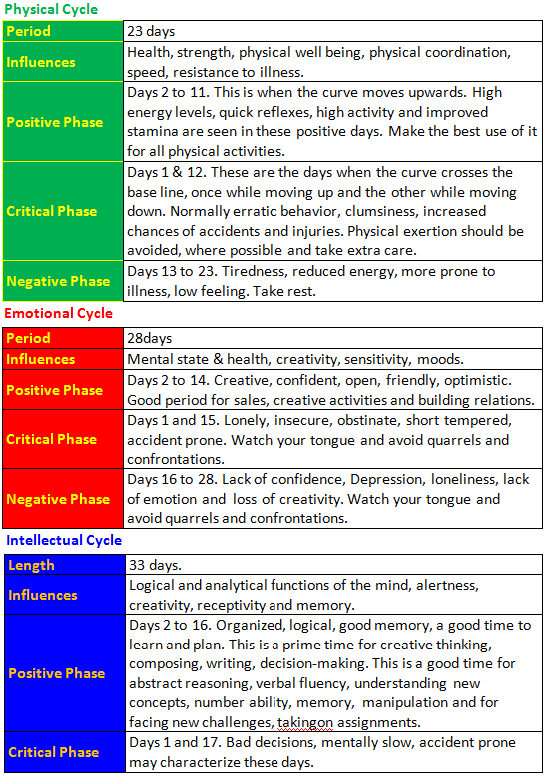Biorhythms research was started in the 1890s by a doctor from Berlin, Dr. Wilhelm Fliess. He did pioneering work collecting statistics of health, fevers, death and disease records of his patients. The statistics he collected and studied led to the discovery that there are “inbuilt clocks” in humans which are responsible for a 23 day cycle which influences the physical condition and a 28 day cycle influencing the emotions. Later Sigmund Freud and many other noted scientists showed interest and did research in biorhythms. In the 1930s a very successful study was conducted showing accident proneness during the critical days in the cycle. The critical days are the days when the cycles change from high to low or vise versa. many scientists and doctors have carried out successful experiments related to the biorhythm theory over the years. In Japan the biorhythm cycles are used by many organizations, industries to monitor the performance of workers and particularly taxi and other transport drivers.
The following are the details of the 3 bio-cycles and how to understand & use them to your best advantage.
Remember the following three points:
The curve is called positive when it is moving upwards from the central horizontal line.
The curve is called negative when it is moving downwards from the central horizontal line.
The critical days are when the curve is crossing the central horizontal line – either up or down.

The best thing to do is to chart your biorhythm and test the theory. Mark on a calendar how you feel mentally, physically, emotionally and intellectually each day and you will begin to see cycles taking shape. There will be days you feel high physically, low mentally and critically low emotionally. Of course there will also be days when you feel high in all four areas. Once you get a proper hang of your biorhythm cycles, you can be prepared and can plan to get the best results. On a day, when all four aspects are at their lowest, you would do well to stay in bed. On a all high day, you will want to do everything productive you can.











